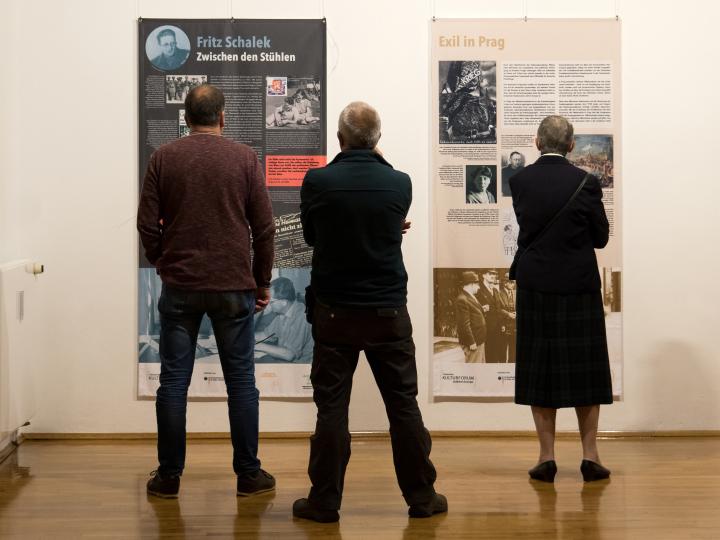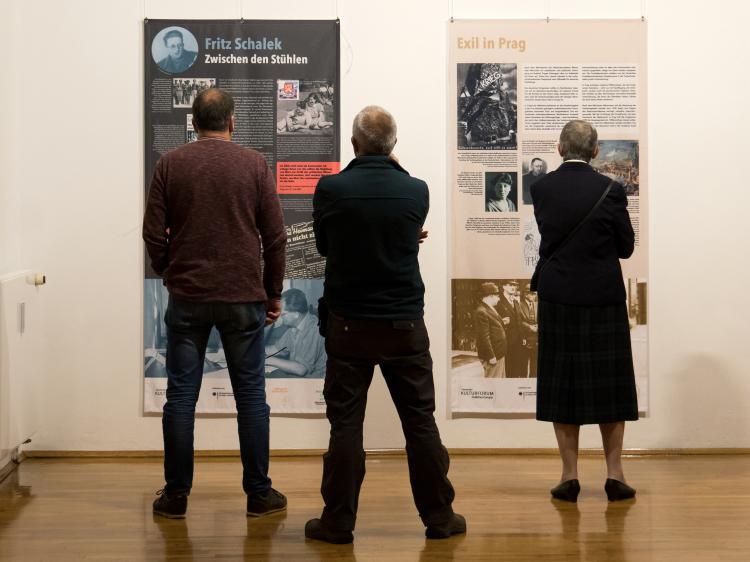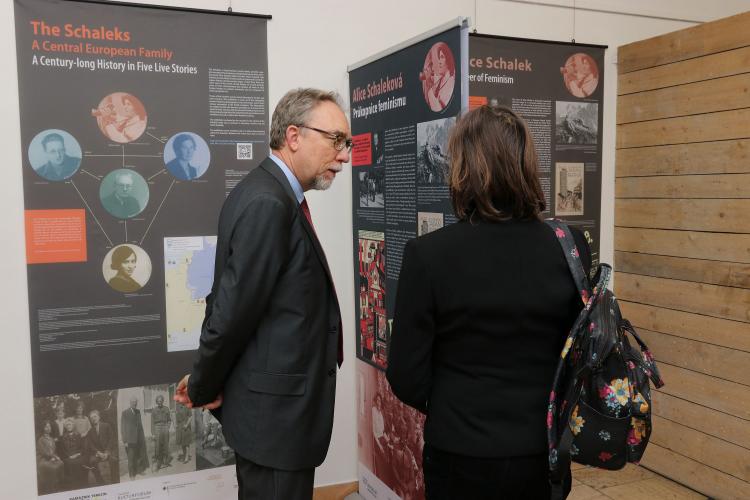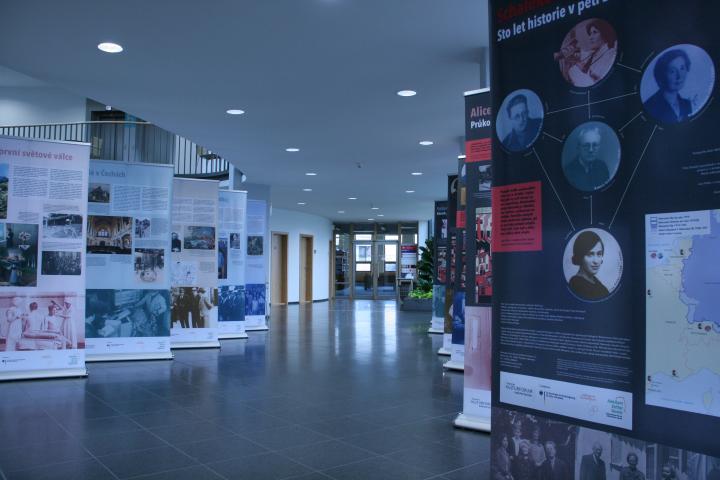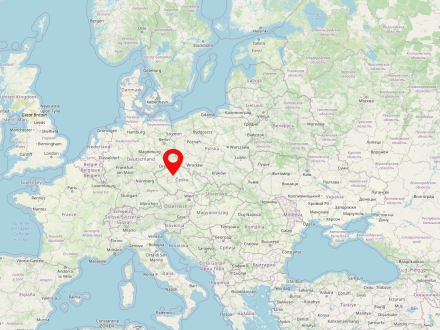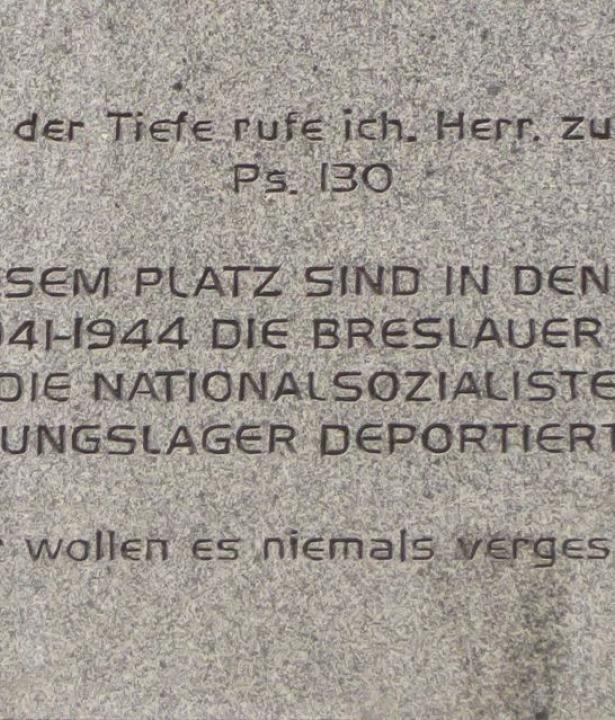The traveling exhibition "The Schaleks - a Central European Family" tells the story of Central Europe in the 20th century through five biographies from the German-Czech-Jewish Schalek family. It consists of eleven double-sided roll-ups printed in German and Czech and a nine-minute accompanying film. In addition, an English-language version of the exhibition was created with the Terezín Memorial.
The five protagonists are:
Robert Schalek (1877-1963): writer, presiding judge in the first trial of the psychic Hanussen
Alice Schalek (1874-1956): k. u. k. War correspondent in World War I and world traveler
Malva Schalek (1882-1945): painter of pictures from the Theresienstadt ghetto, among others
Lisa Fittko (1909-2005): resistance fighter in National Socialist Berlin, escape helper in southern France for Nazi persecutees, among others Walter Benjamin (1892–1940)
Fritz Schalek (1913-2006): resistance fighter, emigrant and activist of the German minority in
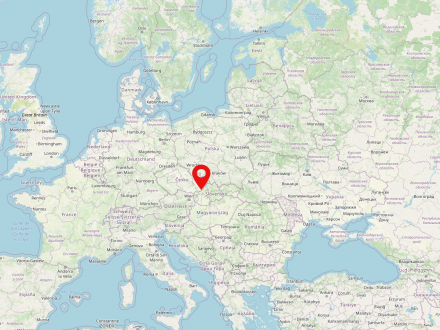
Czechoslovakia was a state existing between 1918 and 1992 with changing borders and under changing names and political systems, the former parts of which were absorbed into the present-day states of the Czech Republic, Slovakia and Ukraine (Carpathian Ukraine, already occupied by Hungary in 1939, from 1945 to the Soviet Union). After 1945, Czechoslovakia was under the political influence of the Soviet Union, was part of the so-called Eastern Bloc as a satellite state, and from 1955 was a member of the Warsaw Pact. Between 1960 and 1990, the communist country's official name was Czechoslovak Socialist Republic (abbreviated ČSSR). The democratic political change was initiated in 1989 with the Velvet Revolution and resulted in the establishment of the independent Czech and Slovak republics in 1992.
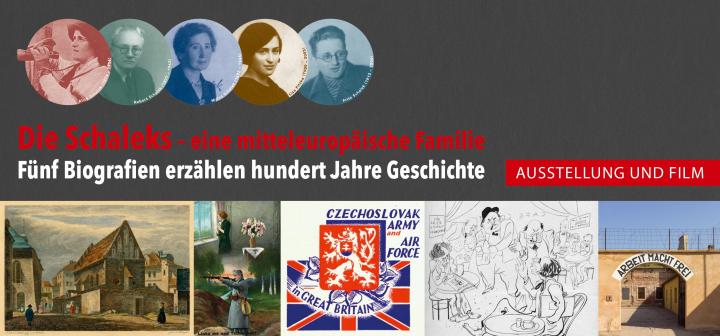
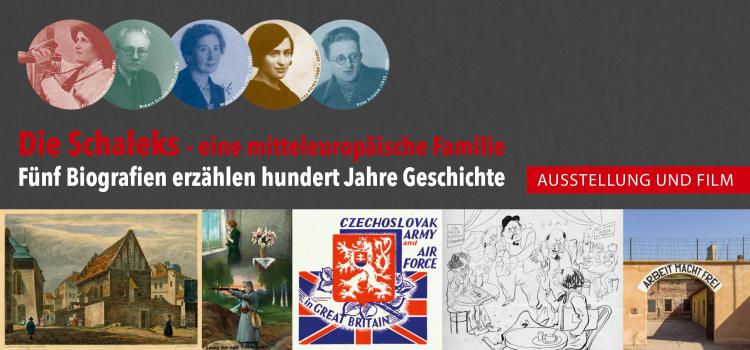

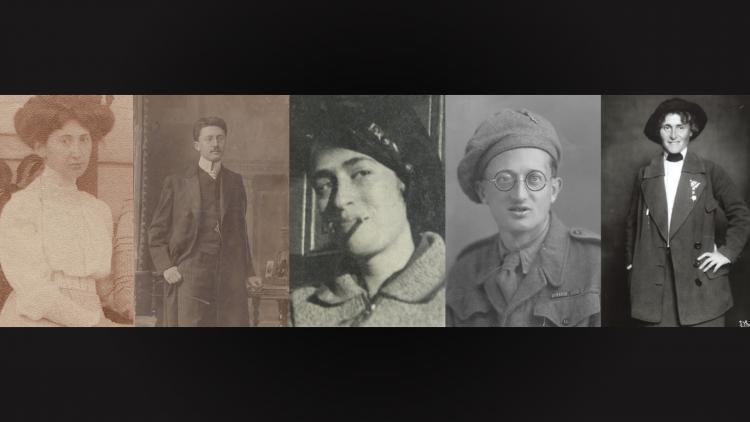
Prague is the capital of the Czech Republic and is inhabited by about 1.3 million people, which also makes it the most populated city in the country. It is on the river Vltava in the center of the country in the historical part of Bohemia.
The exhibition aims to appeal to a broad audience, bringing the German-Czech-Austrian history of the 20th century to life through the prism of individual fates in a way that is personal and attractive. The film and exhibition, which also includes comic panels, encourage young visitors to reflect on their own families' connections to Central European history. They are thus suitable as a starting point for – possibly transnational – workshops with schools and other educational institutions. Extensive didactic accompanying material has been prepared for this purpose.
The publicist Ralf Pasch developed the exhibition, film and didactic material in cooperation with the German Culture Forum for Central and Eastern Europe. The film was produced by the award-winning Berlin production company "Die Kulturingenieure" ("the cultural engineers") and is available under this Link in German and here in Czech.
The accompanying didactic material was created in cooperation with the didactic history initiative "Die Zeitreisenden" ("the time travelers").
